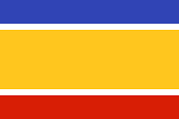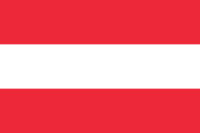-
Unlock powerful performance gains with React server components and server functions in Next.js
-
Manage forms, state, and data fetching with modern tools like Zustand and Next.js
-
Build reusable, scalable components using proven React and TypeScript design patterns
-
Purchase of the print or Kindle book includes a free PDF eBook
Reading, navigating, and debugging a large frontend codebase can be challenging. Learn React with TypeScript, 3rd Edition helps you overcome these challenges by teaching you React, TypeScript, and Next.js, which are core technologies for building scalable, high-performance apps.
Updated for React 19, this new edition covers new features such as React Server Components, server functions, and powerful modern hooks, including useFormStatus and useActionState. You'll build type-safe components using TypeScript, making this book ideal for React beginners who want to master patterns aligned with real-world frontend and React developer roles.
You’ll also explore Next.js for RSCs and routing, and learn to use Zustand for global state in React—a lightweight alternative to traditional state managers. The chapters guide you through efficient data-fetching strategies with RSCs in Next.js, as well as in single-page applications (SPAs). The book also covers form handling, reusable architecture, and testing React components with Vitest to ensure robust, production-ready apps.
By the end of this book, you’ll have the confidence and skills to build maintainable React applications with TypeScript and Next.js, following modern web development best practices.
This book is for aspiring React developers, frontend engineers, or full-stack developers looking to build large-scale web applications using React and TypeScript. This guide offers a solid foundation in modern web development practices using React, TypeScript, and Next.js. Intermediate knowledge of HTML, CSS, and JavaScript is required.
-
Apply React styling techniques to create stunning and visually engaging UIs
-
Leverage server components to seamlessly integrate with client components for optimized performance
-
Fetch and manage data efficiently in React for a smooth, responsive user experience
-
Build interactive, validated forms with TypeScript and server actions to handle user input
-
Share state efficiently across components using Zustand
-
Structure scalable, multi-page applications effortlessly with Next.js
-
Write unit tests for React apps with Vitest and React Testing Library
 United States
United States
 Great Britain
Great Britain
 India
India
 Germany
Germany
 France
France
 Canada
Canada
 Russia
Russia
 Spain
Spain
 Brazil
Brazil
 Australia
Australia
 Singapore
Singapore
 Canary Islands
Canary Islands
 Hungary
Hungary
 Ukraine
Ukraine
 Luxembourg
Luxembourg
 Estonia
Estonia
 Lithuania
Lithuania
 South Korea
South Korea
 Turkey
Turkey
 Switzerland
Switzerland
 Colombia
Colombia
 Taiwan
Taiwan
 Chile
Chile
 Norway
Norway
 Ecuador
Ecuador
 Indonesia
Indonesia
 New Zealand
New Zealand
 Cyprus
Cyprus
 Denmark
Denmark
 Finland
Finland
 Poland
Poland
 Malta
Malta
 Czechia
Czechia
 Austria
Austria
 Sweden
Sweden
 Italy
Italy
 Egypt
Egypt
 Belgium
Belgium
 Portugal
Portugal
 Slovenia
Slovenia
 Ireland
Ireland
 Romania
Romania
 Greece
Greece
 Argentina
Argentina
 Netherlands
Netherlands
 Bulgaria
Bulgaria
 Latvia
Latvia
 South Africa
South Africa
 Malaysia
Malaysia
 Japan
Japan
 Slovakia
Slovakia
 Philippines
Philippines
 Mexico
Mexico
 Thailand
Thailand









